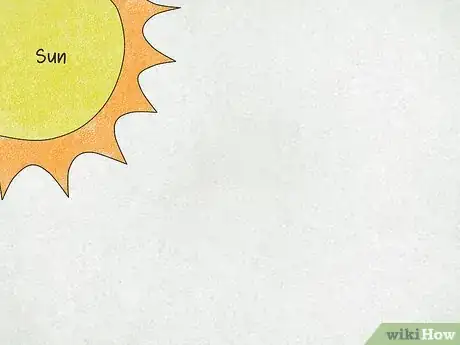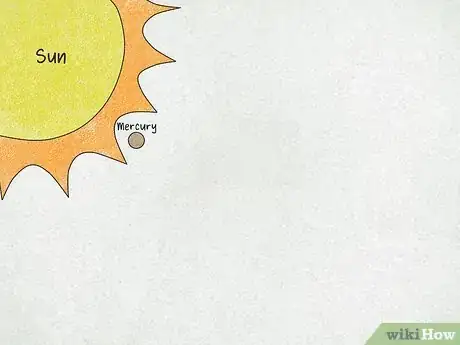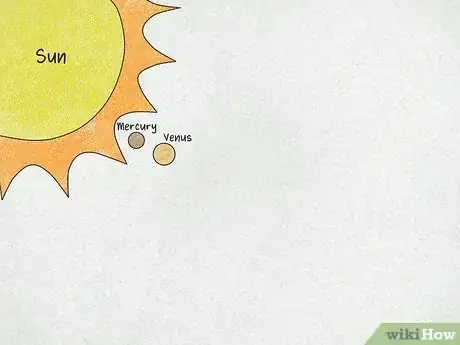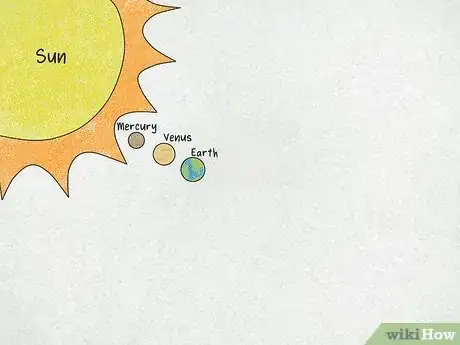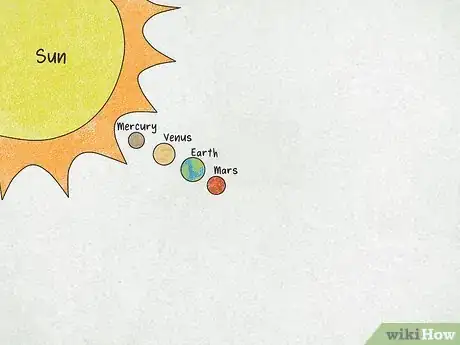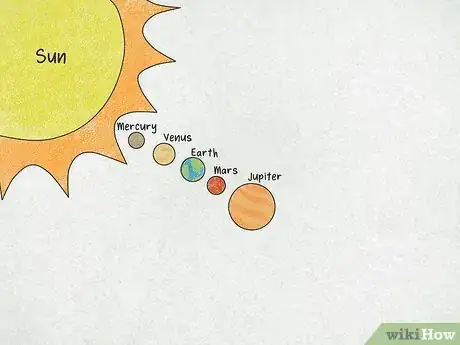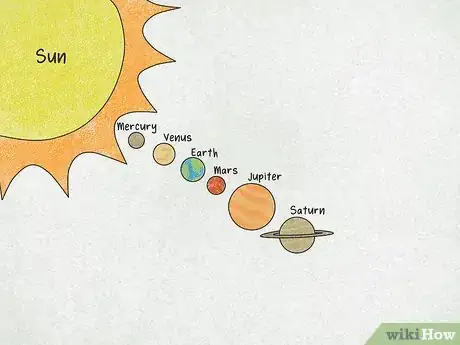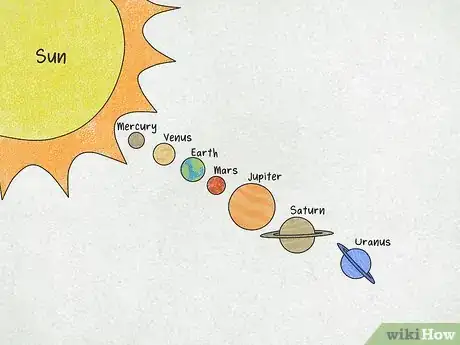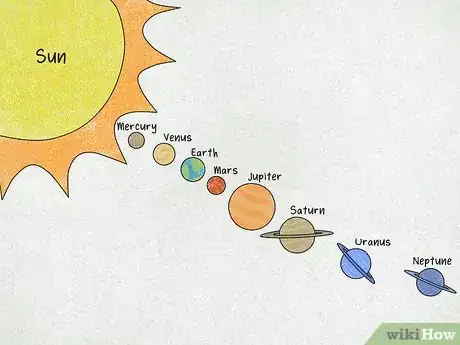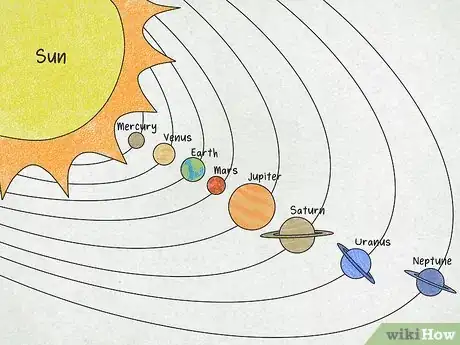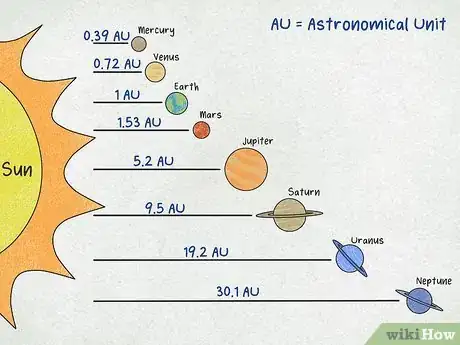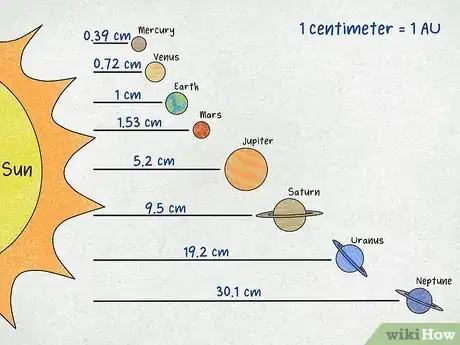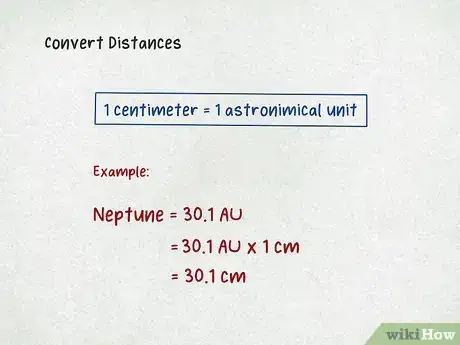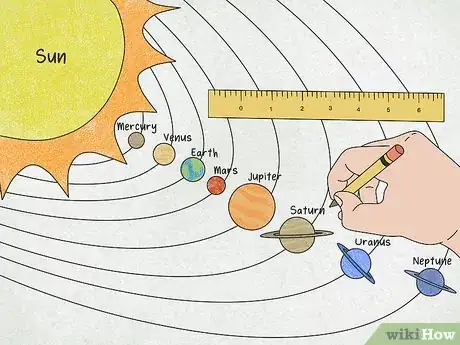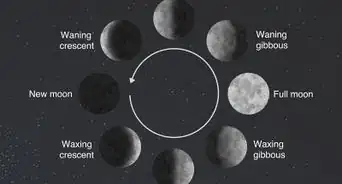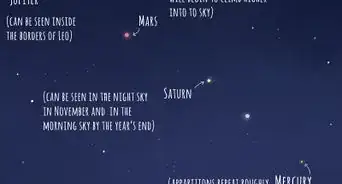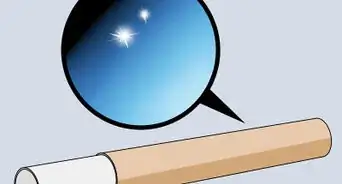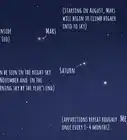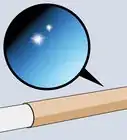This article was co-authored by Kelly Medford and by wikiHow staff writer, Kyle Hall. Kelly Medford is an American painter based in Rome, Italy. She studied classical painting, drawing and printmaking both in the U.S. and in Italy. She works primarily en plein air on the streets of Rome, and also travels for private international collectors on commission. She founded Sketching Rome Tours in 2012 where she teaches sketchbook journaling to visitors of Rome. Kelly is a graduate of the Florence Academy of Art.
There are 12 references cited in this article, which can be found at the bottom of the page.
wikiHow marks an article as reader-approved once it receives enough positive feedback. This article has 11 testimonials from our readers, earning it our reader-approved status.
This article has been viewed 627,623 times.
The solar system is made up of the Sun and the 8 planets that orbit it, including Mercury, Venus, Earth, Mars, Jupiter, Saturn, Uranus, and Neptune. Drawing the solar system is easy once you know the size and order of the planets, and it’s a great way to learn about the different properties of the celestial bodies that Earth shares space with. You can even draw the solar system to scale by scaling down the distances between the planets and the sun. Use a ruler for an estimation of the distance. Each centimeter is one AU (Astronomical Unit).
Steps
Drawing the Sun and Planets
-
1Draw the Sun near the left side of the page. The sun is the largest body in the solar system, so draw a large circle to represent it. Then, color it in with orange, yellow, and red to represent the hot gasses that it’s made up of. Remember to leave enough space on the page to draw all of the planets.
- The Sun is made up of mostly helium and hydrogen gas, and it's constantly converting hydrogen into helium through a process called nuclear fusion.
- You can draw the sun freehand, or you can trace a round object or use a compass.
-
2Draw Mercury to the right of the sun. Mercury is the smallest planet in the solar system, and it’s the closest planet to the Sun. To draw mercury, draw a small circle (remember, it needs to be smaller than the rest of the planets you’ll be drawing), and color it in dark gray.
- Like Earth, Mercury has a liquid core and a solid outer crust.[1]
Advertisement -
3Sketch a larger circle to the right of Mercury for Venus. Venus is the second closest planet to the Sun, and it’s bigger than Mercury. Color in Venus with different shades of yellow and brown.
- Venus gets its yellowish-brown color from the clouds of sulfur dioxide that cover its surface. However, if you were able to travel through the clouds and look at the actual surface of the planet, it would look brownish-red.[2]
-
4Draw Earth to the right of Venus. Earth and Venus are very similar in size (Venus is only 5% smaller in diameter), so make the circle you draw for Earth just slightly bigger than the one you drew for Venus.[3] Then, color in Earth using green for the continents and blue for the oceans. Leave some white space in there to represent the clouds in Earth’s atmosphere.
- One reason why there’s life on Earth but not on the other planets in the solar system (that scientists know of) is because of Earth’s distance from the Sun. It's not so close to the Sun that temperatures are extremely hot, but it's not so far away that everything freezes over either.[4]
-
5Add a smaller circle to the right of Earth for Mars. Mars is the second smallest planet in the solar system, so draw it slightly bigger than Mercury but smaller than Venus and Earth. Then, color it in with red and brown to give it a rusty color.[5]
- Mars gets its iconic rusty red coloring from the iron oxide that covers its surface. Iron oxide also gives blood and rust their color.[6]
-
6Draw a large circle to the right of Mars for Jupiter. Jupiter is the largest planet in the solar system, so make it bigger than all of the planets you’ve drawn before it. Just make sure the circle you draw is smaller than the Sun you drew since the Sun is about 10 times bigger across. Color in Jupiter using red, orange, yellow, and brown to represent the different chemicals in the planet’s atmosphere.[7]
Did you know? The color of Jupiter can actually change depending on the weather. Big storms in the atmosphere bring hidden chemicals and materials to the surface, which alters the planet’s color.
-
7Draw a smaller circle with rings to the right of Jupiter for Saturn. Saturn is smaller than Jupiter, but it’s bigger than the rest of the planets in the solar system, so make it bigger than the first 4 planets you drew. Color in Saturn and its rings using yellow, gray, brown, and orange.
- Unlike the other planets, Saturn has distinct rings circling around it, which formed when objects broke up in the planet’s orbit and got stuck in its gravitational pull.[8]
-
8Sketch Uranus to the right of Saturn. Uranus is the third largest planet in the solar system, so draw a circle that’s smaller than Jupiter and Saturn but bigger than all of the other planets you’ve drawn so far. Uranus is mostly made up of ice, so color it light blue.[9]
- Unlike most of the planets in the solar system, Uranus doesn’t have a rocky molten core. Instead, its core is made up of mostly ice, water, and methane.
-
9Draw Neptune to the right of Uranus. Neptune is the eighth and final planet in the solar system (Pluto used to be considered the ninth planet, but it’s been reclassified as a dwarf planet). It’s the fourth largest planet, so make it smaller than Jupiter, Saturn, and Uranus, but bigger than the rest of the planets. Then, color it in dark blue.[10]
- Neptune’s atmosphere contains methane, which absorbs red light from the sun and reflects blue light. That’s why the planet appears blue.
-
10Sketch the orbital path of each planet to finish your drawing. Every planet in the solar system orbits around the sun. To show this in your drawing, draw a curved path coming off of the top and bottom of each planet. Extend the paths toward the Sun and off the edge of the page to show that each planet travels around the sun.[11]
- Make sure none of the orbital paths you draw intersect with each other.
Scaling Down the Solar System
-
1Convert the distance between each planet and the Sun to astronomical units. In order to accurately represent the distances between the planets and the sun in your drawing, first you’ll need to convert each distance to astronomical units (AU). The distance from the sun for each planet in AU is:[12]
- Mercury: 0.39 AU
- Venus: 0.72 AU
- Earth: 1 AU
- Mars: 1.53 AU
- Jupiter 5.2 AU
- Saturn: 9.5 AU
- Uranus: 19.2 AU
- Neptune: 30.1 AU
-
2Choose a scale to use for your drawing. You can make 1 centimeter = 1 AU, 1 inch = 1 AU, or use a different unit or number for your scale. However, keep in mind that the bigger the unit and number you use, the bigger the paper you’ll need for your drawing.[13]
Tip: For a standard size piece of paper, having 1 centimeter = 1 AU should work. If you make 1 AU any longer than that, you may need to use a larger piece of paper.
-
3Convert all of the distances using your scale. To convert the distances, multiply each distance in AU by the number before the new unit. Then, write down the distance with the new unit.[14]
- For example, if your scale is 1 centimeter = 1 AU, you would multiply each distance by 1 to convert them. Therefore, since Neptune is 30.1 AU away from the sun, it would be 30.1 centimeters away in your drawing.
-
4Use the scaled-down distances to draw the solar system to scale. Start by drawing the Sun on a piece of paper. Then, measure and mark the scaled-down distances from the sun for each planet using a ruler. When you’re finished, draw the planets over the marks you made.[15]
- Write down the scale you used somewhere on your drawing so it’s clear how far apart the planets are.
Community Q&A
-
QuestionHow do people know that it is a new asteroid rather than the same asteroid discovered twice?
 Community AnswerBecause astronomers check the "orbital elements" of the asteroid - stuff like how far away it is, if it's moving in a circle or an ellipse, and how long it takes - and see if they're the same as those of an existing asteroid. Two asteroids can't have the same orbital elements or they'd be in the same place.
Community AnswerBecause astronomers check the "orbital elements" of the asteroid - stuff like how far away it is, if it's moving in a circle or an ellipse, and how long it takes - and see if they're the same as those of an existing asteroid. Two asteroids can't have the same orbital elements or they'd be in the same place. -
QuestionWhich color do I have to apply to the chart paper before drawing the solar system?
 Community AnswerIt is up to you, but you should probably choose black or some sort of dark blue color. It really helps with drawing the planets.
Community AnswerIt is up to you, but you should probably choose black or some sort of dark blue color. It really helps with drawing the planets. -
QuestionWhat is the color of outer space?
 Community AnswerIt would be black with scattered white areas. Stars look white to the eye in space, but the atmosphere of earth makes them look different colors.
Community AnswerIt would be black with scattered white areas. Stars look white to the eye in space, but the atmosphere of earth makes them look different colors.
Things You’ll Need
- Paper
- Pencil
- Colored pencils
- Compass (optional)
References
- ↑ https://www.universetoday.com/34021/what-is-mercury-made-of/
- ↑ https://www.universetoday.com/46436/what-color-is-venus/
- ↑ https://nineplanets.org/venus.html
- ↑ http://scienceline.ucsb.edu/getkey.php?key=1075
- ↑ https://www.space.com/16871-how-big-is-mars.html
- ↑ https://www.space.com/16999-mars-red-planet.html
- ↑ https://www.universetoday.com/15152/color-of-jupiter/
- ↑ https://solarsystem.nasa.gov/planets/saturn/in-depth/
- ↑ https://www.space.com/18706-uranus-composition.html
- ↑ https://www.space.com/18924-how-big-is-neptune.html
- ↑ https://www.edrawsoft.com/template-solar-system.php
- ↑ https://studyres.com/doc/13494502/activity-%E2%80%93-scale-drawing-of-the-solar-system
- ↑ https://studyres.com/doc/13494502/activity-%E2%80%93-scale-drawing-of-the-solar-system
- ↑ https://studyres.com/doc/13494502/activity-%E2%80%93-scale-drawing-of-the-solar-system
- ↑ https://studyres.com/doc/13494502/activity-%E2%80%93-scale-drawing-of-the-solar-system
About This Article
To draw the solar system, start by drawing a large circle toward the left side of your page for the Sun. Then, draw 8 circles to the right of the Sun so you have 1 for each planet in the solar system, including Mercury, Venus, Earth, Mars, Jupiter, Saturn, Uranus, and Neptune. Make the circle for Jupiter bigger than all of the rest since it's the biggest planet, and make the circle for Mercury smaller than the rest since it's the smallest planet. To learn how to color in the planets in your solar system drawing, read on!
